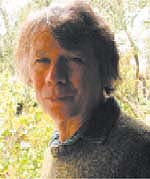All Issues
How to manage “soil quality” key question for farmers and scientists
Publication Information
California Agriculture 57(2):34-34.
Published April 01, 2003
PDF | Citation | Permissions
Full text
Every grower and UC Cooperative Extension farm advisor appreciates the importance of soil quality to farm management. But remarkably, few soil scientists agree on how this key component is to be assessed or monitored. Soil is a complex natural resource that is subject to multiple beneficial uses, giving rise to debate about how it should be managed. However, experts do concur on the goals of a soil quality evaluation. It must:
-
reflect what is known about the behavior of the surround-ing ecosystem, including its responses to climate variation and human impacts;
-
integrate the biological, chemical, geological, hydrological and physical properties of field soils,
-
and translate scientific understanding into effective deci-sion-making for soil resource management.
UC research teams have made recent strides in evaluating soil quality for production agriculture. One group of soil scientists seized a unique opportunity to examine a large number of archived California soil samples that had not been disturbed for close to 60 years, comparing their chemical fertility properties (pH, nutrient levels, carbon content) with those of soil samples collected only 2 years ago from the same field sites (p. 38). Their results may surprise some readers. Another team has added to our understanding of how natural vegetation enhances soil quality as reflected in the same chemical properties — plus an additional physical property, bulk density, which is connected to soil aeration and permeability (p. 42). They have documented the many beneficial effects of blue oak stands, concluding that oak preservation deserves consideration as part of the optimal management of the urban-wildland-agriculture interface.
Other soil scientists extend these ideas to cover crop and tillage management on agricultural soils, pointing out in their careful study that, to ensure optimal crop yields, the positive effects of cover crops must be balanced with the well-known advantages of tillage (p. 48). Yet another research group continues the theme of balancing impacts and tradeoffs in their timely study of how incorporating rice straw into soil, a management practice adopted to mitigate the known air quality impacts of rice straw burning, can produce toxic substances, notably sulfides, that reduce rice yields.
The research performed by these UC teams provides valuable insight into which soil properties are good indicators of soil quality: organic carbon content, nutrient levels, pH, salinity levels and bulk density, to name the more prominent ones. But how well does soil quality as measured by these properties correspond to growers' perceptions of their own soils?
A recent study put exactly this question to a group of San Joaquin Valley farmers participating in the West Side On- Farm Demonstration Project. Out of a maximum high score of 10 for perfect agreement between soil quality as rated by growers and soil quality as rated by indicator properties (see list above), the average score was a remarkable 8 (±1 standard deviation). There was a close correspondence between scientific measurements of soil quality and growers’ own per-ceptions based on their experience with the land. Another result was that growers were more likely to support alternative management practices (for example, organic matter amendments) on soils perceived already to be of lower quality. This choice reveals a belief that alternative practices are better for curing “sick” soils than sustaining “healthy” ones. Perhaps the most significant grower viewpoint expressed was that soil quality assessment is deemed useful only if it increases crop yield and farm profitability.
It is evident from these studies that, although much is to be learned about soil quality assessment, organic matter management is emerging as a critical factor in the control and maintenance of agricultural soil quality. The current 5-year mission of the Kearney Foundation of Soil Science, “Soil Carbon and California's Terrestrial Ecosystems,” recognizes this factor in a multifaceted research program focusing on four broad goals:
-
to understand the mechanisms governing the storage and flow of carbon pools in soils that support California’s di-verse ecosystems;
-
to quantify the impacts of anthropogenic inputs of water, nutrients and pollutants on the transformations of carbon in soil;
-
to assess the roles soil carbon may play in emissions of greenhouse gases, and
-
to analyze strategies and policy options for soil carbon management that optimize natural resource utilization and mitigate adverse effects of global climate change.
Ongoing Agriculture and Natural Resources (ANR) research directed toward these goals and the elusive connection between soil quality and farm profitability is essential to the development of long-term policies that will keep California competitive in agricultural production while maintaining the rich diversity of ecosystem services that have benefited its people for more than two centuries.





